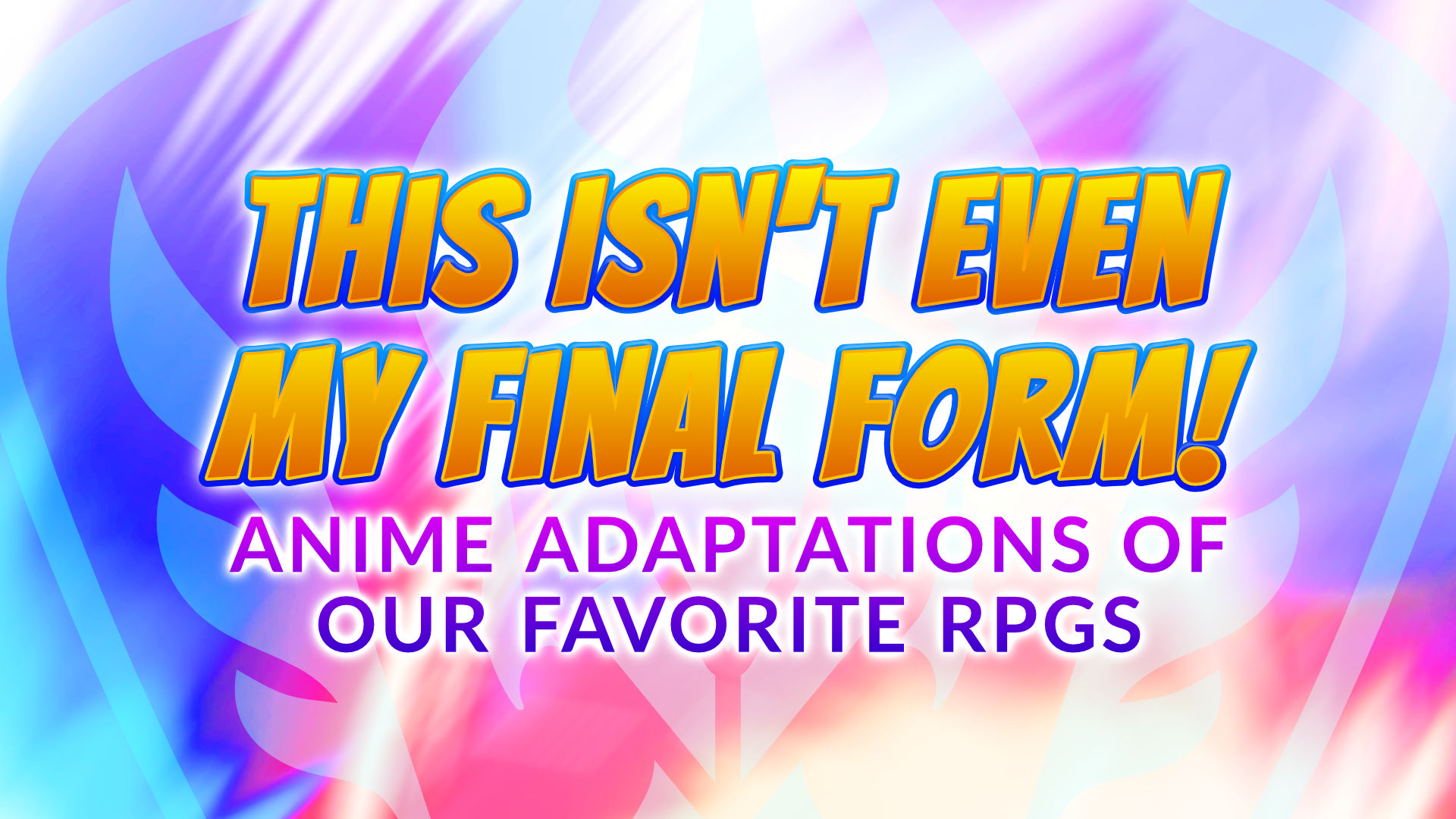The relationship between anime/manga and JRPGs goes back to the beginning of the genre, with Dragon Ball creator and artist Akira Toriyama acting as character designer on Dragon Quest. After that, most early JRPGs played on the tropes and storytelling beats of anime and manga. Seriously, go watch Castle in the Sky and Nausicaä of the Valley of the Wind and tell me that practically every JRPG from the late 80s and early 90s doesn’t heavily borrow from at least one of those movies.
Naturally, this makes RPGs the perfect fodder for anime adaptations. In fact, in the past couple of months we’ve had two movie adaptations of popular RPG franchises. So we decided to take a look at adaptations for some of our other favorite games. While not all of them maintain the appeal of their source material, there are some real gems here.
Oh, and we might be cheating a little with Advent Children, but really, it’s the most anime thing on this list.
What are some of your favorite (or least favorite) adaptations of RPGs? What about some games that you’d love to see turned into an anime? Let us know on Twitter, Facebook, Instagram, and Discord!
Intro by Zach Wilkerson
Final Fantasy VII: Advent Children
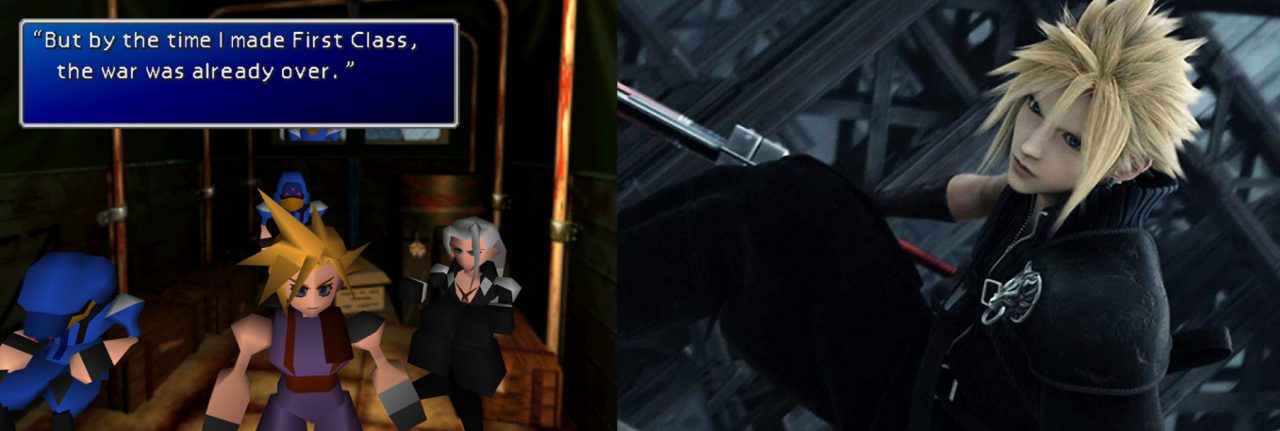
The Compilation of Final Fantasy VII is perhaps the most well-known attempt by Square Enix to branch off one of their famous properties into a multimedia franchise. Final Fantasy VII‘s beloved world and characters were rife for expansion, and while the Compilation was a bit of a mixed bag overall in terms of quality (looking at you, Dirge of Cerberus), a few installments have stood the test of time. One of these, in my humble opinion, is the 2005 CGI animated film, Final Fantasy VII: Advent Children.
Now, make no mistake: Advent Children isn’t a great movie by any stretch of the imagination. However, its glitzy CGI animation and frenetic action set pieces set a standard for the Final Fantasy series that the games have been trying to replicate ever since. Just look at the combat of games like Dissidia or Final Fantasy XIII, where characters perform dizzying, gravity-defying stunts with particle effects flying every which way, and the influence of Advent Children becomes impossible to deny. Moreover, while the story of Advent Children is pretty confusing even for diehard fans of the game, there is some excellent fanservice to be had. The final fight between Cloud and Sephiroth is action-packed and chaotic, set to a heavy metal remix of “One-Winged Angel” that has no business being as awesome as it is. Seeing party members like Cid, Barret, Yuffie, and Vincent rendered in (at the time) cutting-edge graphics as they come together to fight a massive boss monster is a fist-pumping and triumphant moment. (As is the ridiculous battle in the sky that takes place immediately after. You know the one.) Also, Vincent’s quest for a new cell phone? Cait Sith having a Scottish accent for some reason? Literally everything involving Reno and Rude? That stuff is priceless.
Even putting aside Advent Children‘s value as gussied-up fanservice, however, I do actually find Cloud’s arc in the film to be somewhat relatable. Many fans have complained about Cloud’s devolution from an upbeat and confident hero into a moody downer, but as someone who struggles with depression, I found that watching Cloud push his loved ones away out of a deep-seated fear that they would be better off without him struck a chord in me. This is especially true in the 2009 director’s cut, Advent Children Complete, which adds a couple more scenes surrounding Cloud and his surrogate family, as well as his struggle to maintain a sense of normalcy in the wake of Final Fantasy VII‘s climax. I’m not saying this characterization is particularly deep or meaningful, but it is something to consider, and in my opinion, it stands alongside Zack’s storyline in Crisis Core as one of the more thoughtful additions to the Final Fantasy VII mythos. With the Final Fantasy VII Remake finally on the way, I can only hope that Square Enix remembers to focus on the quieter moments along with the bombast and glamour, and that they treat the game’s characters and their struggles with nuance and respect.
by Peter Triezenberg
Ys and Ys II: Castle in the Heavens

Released in North America in a 2002 DVD collection titled Ys: Legacy, the Ys anime is actually comprised of two different series. The first is a seven-episode long show aptly titled Ys that covers Ys I‘s plot. The second is a four-episode adaptation of the series’ second game entitled Ys II: Castle in the Heavens.
Given that these anime adaptations came out between 1989 and 1993, they’re considerably dated by today’s standards. However, there’s still a lot to appreciate in how the screenwriters elaborated and expanded upon the plots of the first two Ys games to better fit an anime format, as well as the way the animators tried to mimic the games’ visuals for the shows’ action sequences, particularly in the first anime. The music, composed by Falcom’s very own Sound Team JDK and performed by the JDK Band, also stands out quite nicely.
I’ve only ever had the pleasure of watching the Ys anime with their English dubs, which provide a surprising amount of unintentional entertainment too. Names of characters constantly change since the voice actors apparently weren’t sure how to pronounce “Adol,” Dark Fact often becomes Dark Factor, and Lilia for some reason becomes Lylian. Also, the number of times “evil” is used both by the villains themselves and otherwise is hilarious out of context, especially in the first anime.
While I think that Ys II: Castle in the Heavens is arguably the stronger of the two adaptations because the pace and flow don’t drag on and the animation budget seems higher overall, both series are enjoyable as far as old-school fantasy anime go. If you can get past their datedness, that is! To be honest, it was the Ys anime that convinced me to give Falcom’s venerable action RPG series a shot!
by Audra Bowling
Tales of the Abyss
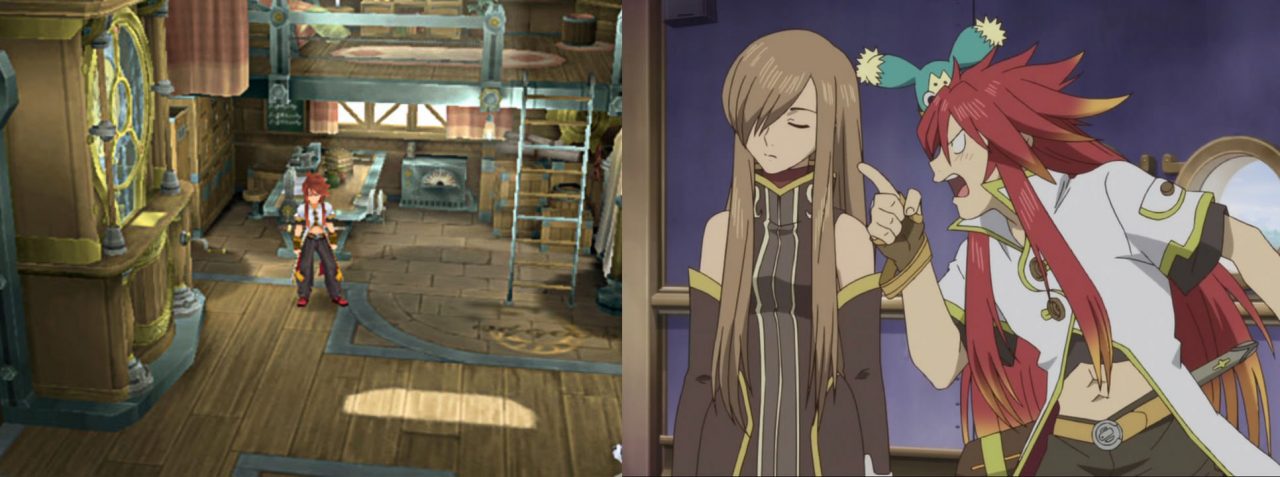
While Namco had been adapting their Tales of titles for the small screen for several years by the time October 2008 rolled around, it’s fortunate they decided to take the most story-driven title and give it a full 26-episode anime season so that we may properly hear about the Tales of the Abyss.
And I’m happy to say this pairing worked out well for the animated series! Originally released on the PlayStation 2 in 2005, Tales of the Abyss featured a long and layered story that sometimes clashed with uneventful cutscene direction — most of which consisted of lengthy dialogue exchanges and exposition to explain its (truly) fascinating world and complicated cast. The anime, however, presents the character drama and unique world in a way that PS2 hardware couldn’t reasonably capture.
Despite that, I’m still not sure how valuable the anime will be to those who haven’t played the game; while the anime beautifully visualizes events, some elements may still feel…off, largely because Tales of the Abyss just has that big a story to tell. Certain events have their emotional weight cut short in order to keep things moving; other elements are poorly explained, hand-waved, happen out of the blue, or are simply elaborated better in the game. But Tales of the Abyss has a flare for drama and some fantastic storytelling that lends itself better to an animated series. (And while I can’t speak for everyone, I don’t think most of us were compelled to play Abyss strictly for its gameplay anyways.)
While the Tales of the Abyss anime saw an overseas release, it’s subtitles-only and therefore features none of the talented English VA many of us have come to love (an admittedly small complaint considering the similarly strong Japanese cast). I also admire that Namco kept Bump of Chicken’s original (and very popular) PS2 opening theme song “Karma” to kick off each episode of the anime as it did each session of the game. And no one should pass up the show’s energetic new ending theme “Bouken Suisei” [Adventure Comet], performed by Kurumi Enomoto and composed by Bump of Chicken’s frontman, Motoo Fujiwara.
I honestly think many JRPG fans can appreciate Tales of the Abyss for its deep characters and plot (like abyssal deep!). The anime runs at a nice, quick pace and allows players (or perhaps even series fans who missed/skipped this title) to plunge into the world of Eldrant and experience the story in a way they couldn’t with the game.
by Stephanie Sybydlo
Xenosaga: The Animation
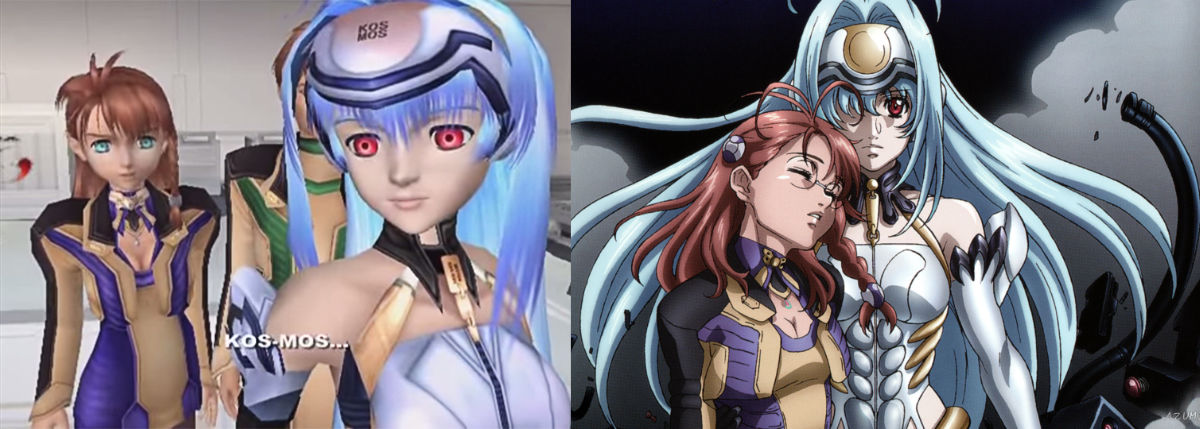
The Xenosaga franchise was a huge undertaking by Monolith Soft in the company’s early days. Originally planned as six main games, the series also spawned a manga, a prequel mobile game, an audio drama, and more. It shouldn’t come as a surprise that an anime was produced. Covering the events of the first game, Xenosaga: The Animation released in 2005 to mixed results.
Set 4,000 years in the future, humanity has escaped from Earth and now lives in constant fear of an alien race known as the Gnosis. To battle this menace, Shion Uzuki of Vector Industries develops a combat android called KOS-MOS. For the most part, the anime follows the same plot as the original game, cutting some content here and there while expanding some details. Giving character and backstory to Kirschwasser, a character who received little screen time in the game, is a great choice. However, reducing a 50-hour RPG to 12 episodes leaves a lot to be desired. In some spots, the short length helps quicken the pace of story beats that dragged in the original game, but these moments are few and far between.
The anime also features new character designs. Though they are based on Kunihiko Tanaka’s original designs for the game, the anime feels squashed and ugly in comparison. The animation itself can be quite good (in the first and final episodes especially), but there are times when it is laughably bad.
Though the anime isn’t a complete waste of time, I highly recommend playing Xenosaga instead. Furthermore, since Xenosaga: The Animation only covers the first of three games, you’re already doing yourself a disservice when it comes to the overall story.
by Tyler Trosper
Hyperdimension Neptunia: The Animation

Despite being introduced to the Neptunia series when the first game came out back in 2011, I didn’t start playing the games until the anime was announced. After I blitzed through the original Neptunia trilogy back in early 2013, I was ready for the anime.
The anime’s plot is a mix of mk2 and Victory’s stories, as well as some original elements. Neptunia‘s story has never been the best, and the anime only makes it worse by having the mk2 portion of the story go darker, which adds unnecessary melodrama. The anime also uses some of the more questionable fanservice scenes from mk2 and Victory, which are a bit uncomfortable to watch. One scene in particular was edited out of mk2 for being too lewd with underage girls (it was added into the remake Re;Birth2), but the anime dedicates a good few minutes to it. Fortunately, the anime also shows the good character development the CPU Candidates get in mk2, as well as Neptune’s growth in Victory.
The animation itself is decent, but it can be hard to look at the characters sometimes. It occasionally feels like they’re reflecting the sun off their skin, which is distracting, and the art is also not as good as the games. That’s to be expected of an anime adaptation, but a lot of my personal enjoyment of the Neptunia series comes from looking at the great art that Tsunako draws for the games.
I feel this adaptation could have been more lighthearted to better suit Neptunia‘s general tone, but it isn’t the absolute worst video game anime I’ve seen.
by Nathan Lee
The Legend of Heroes: Trails in the Sky The Animation

The Legend of Heroes: Trails in the Sky The Animation is an 81-minute feature created in 2011 for a Falcom anniversary project. The title itself is a bit of a misnomer, as after about a one-minute recap of the first game’s ending, the anime throws viewers directly into the middle of Second Chapter (or to those not in the know, the second Trails in the Sky game).
The animated adaptation is definitely not something recommended for newcomers to Trails in the Sky as it doesn’t explain much of anything about the games’ lore or the characters themselves. Instead, it banks on the audience’s prior knowledge of the games to help fill in the blanks.
Speaking of which, most of Second Chapter‘s story is condensed and altered to fit the anime’s relatively short length. The anime also doesn’t run the full course of the game’s plot, so it has a non-conclusive ending since most of the story is left unresolved. However, it at least wisely picks a good moment for Joshua and Estelle to finish on, which is fitting since they’re the main focus of the animation’s story.
While you get things like the Trails series’ obligatory hot springs scene in the animation, other story beats and characters are completely overlooked, which is especially disappointing if you’re a fan of party members like Kevin or Zin.
Still, the anime is an enjoyable watch if you happen to go into it knowing its limitations, and fans of the series might like seeing parts of The Legend of Heroes: Trails in the Sky SC adapted to a different medium.
by Audra Bowling
Persona 5 The Animation

Trying to adapt a 100-hour RPG into a 26-episode anime is a difficult task. So difficult, in fact, they didn’t even finish Persona 5‘s story in those 26 episodes. The TV anime ends on the perceived “bad ending,” so those who only watch the anime will likely be confused or angry at the way the story ends. The anime continued with two OVAs in December 2018 and March 2019, but I say the damage was already done.
Even before the anime aired, fans were already disappointed that Production I.G, the studio that did the cutscenes in the game, were not going to be doing the anime. Instead, it was given to CloverWorks, a studio that had just recently split from their parent company, A-1 Pictures. The animation and art are a downgrade from what Production I.G did for the game, but of course, there is a lot more for CloverWorks to animate here.
The adaptation itself tries its best given the time constraints, but because Persona 5‘s story is already long even without diving into any confidants or other side content, there are lots of cuts to anything that isn’t essential to the story. As such, a lot of Persona 5‘s heart is cut out, since a big portion of what makes the game so endearing is the Social Links. Persona 5‘s story is still good on its own, but the charm just isn’t there in the anime.
CloverWorks really tried their best with what they were given, but the simple fact of the matter is a Persona 5 adaptation would need to be long, at least double the length of a traditional 2-hour anime. That would cost a ton of money though and, for a new studio, just isn’t feasible. If a Persona 5 Royal anime comes out, I would hope it’s at least around 50 episodes to do the games justice.
by Nathan Lee
Tales of Zestiria the X
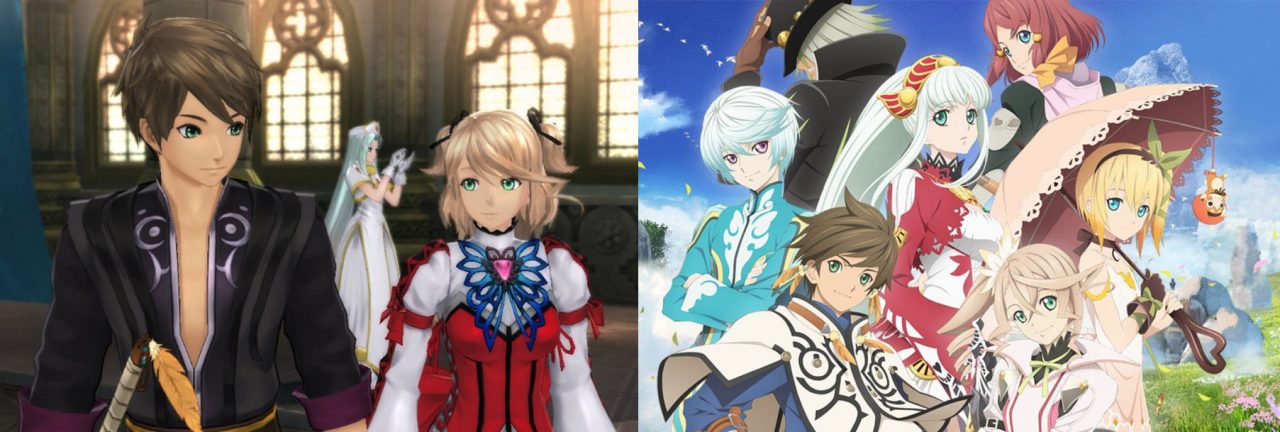
Tales of Zestiria the X, pronounced Tales of Zestiria the Cross, is the anime adaptation of the Tales of Zestiria game. Ufotable produced two seasons between 2016 and 2017. The anime, like the game it is based on, follows the story of Sorey, a young human raised by people known as the Seraphim, a group of beings normally invisible to the human eye. Sorey eventually becomes the Shepherd, a human able to commune with the Seraphim as they try to keep nature balanced by purifying a corrupting force known as Malevolence, which has given rise to countless monsters. Sorey goes on a journey with a group of Seraphim and two human Squires to figure out a way to stop the Malevolence from growing over the land.
There is an interesting mix of Arthurian lore in this fantasy tale, and along with the likable cast of characters, that kept my attention as I watched the anime. Sorey and his friends are a colorful bunch, and I enjoyed the way relationships developed between them throughout the story. Ufotable’s animation, though often relying heavily on CG for monsters and effects, is utterly gorgeous and breathtaking to behold in motion. The music is also quite beautiful, and I immensely enjoyed the English dub for its emotional voice acting.
The biggest issue Tales of Zestiria the X has is its pacing. At times, episodes go at a very slow, gradual speed, only for things to hit a breakneck rush the very next episode. The story focus also goes every which way imaginable, with the second season in particular becoming the “Rose and Alisha Show” as main character Sorey becomes something along the lines of a backup dancer within his own story. Both Rose and Alisha are likable enough, and I understand that the focus on Alisha was no doubt in part due to the backlash the game received for its treatment of her character, but it just felt odd to see so much of the plot center around Sorey’s two Squires at the expense of the Shepherd himself. Considering that I think Sorey, Mikleo, and the other Seraphim are rather interesting characters, it’s a shame that the focus couldn’t have been more balanced between the cast.
The prequel game Tales of Berseria and its main character Velvet also feature in this anime adaptation, though the episodes that focus on them are oddly placed in the middle of the first season and therefore take the audience out of the main storyline. They aren’t bad episodes, but they do little to really flesh out the Tales of Zestiria plotline beyond some minor allusions later on, and they are so short that fans hoping for a proper Tales of Berseria anime adaptation will be left sorely disappointed. This is also the point in the overall anime where the pacing issues start to become noticeable, and the series sadly never gets back on track afterwards.
Which isn’t to say that the anime is entirely bad. All things considered, I rather enjoyed watching it, and I give it credit for trying to stitch so many disparaging plot threads into a cohesive tale, even if the execution isn’t always the best. The anime also deserves kudos for giving Tales of Zestiria a proper conclusion, something the game struggled to do. Oddly enough, I would say Tales of Zestiria‘s lore is best served by playing the game, reading the manga adaptation, and also watching Tales of Zestiria the X. The three pieces end up combining into a surprisingly satisfactory whole.
by Audra Bowling
Persona 4: The Animation

While there had been Persona adaptations before Persona 4: The Animation began airing in Japan in October 2011, it was the first time one of the games from the popular franchise got a full 25-episode series (the 26th episode, with the true ending, was released as part of the Blu-Ray release). Produced by AIC ASTA, the series was initially plagued with some of the usual rush-to-air issues when it appeared on Japanese television (some choppy/less than stellar animation, cutscenes, etc. that were fixed in time for the Blu-Ray release), but by the end of its airing in March 2012, many people (including the original voice actors) lauded it as a faithful version of the story that should be held as the gold standard of game-to-anime adaptations.
So what made Persona 4: The Animation so popular? Why is it possibly one of my favorite anime adaptations? A big part of the show’s success, like the manga before it, is what it chose not to adapt: while the TV world exists in the anime, the dungeon slodging and shadow battles are cut down to their key revelations. Instead, most of the series is focused on what made the game great: character growth and the social links that the protagonist develops with those around him. Rather than merely pay them lip service (something many would complain about with regard to Persona 5‘s adaptation), social links are the driving force of almost every episode, and the show dives even deeper with the characters than the game sometimes did. We even see the more optional social links given some justice (and the protagonist’s exhaustion in trying to get through them all). Humor has just as much a place as heartbreak in the series, giving it a wonderful balance between dealing with a broken family as a child and calling the protagonist a “man-whore.”
Most importantly, the silent protagonist is silent no more; now named Yu Narukami, he often responds to situations with the snarky, deadpan humor that many people wished they could express in the original game (outside of those pesky links!). From chewing out Dojima when he hesitates to comfort his daughter, to learning Narukami has just as many fears surrounding his abandonment by everyone he loves, the protagonist becomes so much more than the puppet of the player. The series then weaves these moments into a slice-of-life story that helps make the eventual twists of the murder mystery all the more unsettling and gut-wrenching.
The series holds up remarkably well, even though its follow-up, Persona 4: Golden, was an overall mess thanks to its attempts to skip through the story (somewhat cleverly played as a New Game Plus) by only animating the new moments from the PlayStation Vita game. There’s a reason Persona 4, both the anime and the game, holds such a special place in people’s hearts.
by Lucy Gray
Final Fantasy: Unlimited
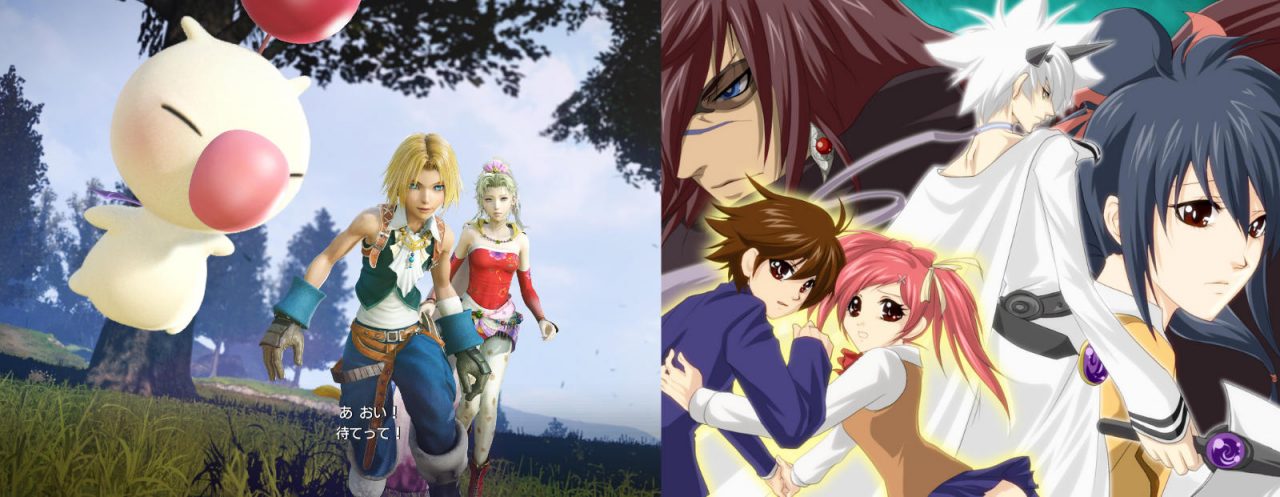
It took me approximately two years to finish watching Final Fantasy: Unlimited, a 26-episode series loosely based on the beloved game franchise. The show is certainly pleasant, though by the third or so episode it becomes dreadfully repetitive, following a “monster of the week” format clearly meant for a younger audience. Speaking of which, the story largely focuses on two original child protagonists, with adult characters only seen in supporting roles. Despite not being the target audience, I found that watching the series a little at a time made for a charming and relaxing diversion, though the show is far from essential viewing for fans of the franchise.
FF:U presents viewers with an original story following the two aforementioned siblings as they explore a plethora of strange and colorful worlds in an attempt to find their missing parents. The variety of unusual landscapes is where the series definitely shines; I always found myself looking forward to seeing what kind of bizarre world the characters would find themselves in next.
While the anime series doesn’t tie into any specific Final Fantasy game or setting, viewers can expect to see plenty of colorful chocobos, summon spells, and of course Cid, portrayed here as a handsome young inventor. Unfortunately, for those of us used to the more mature, gripping, and occasionally heartrending storylines found in the games, the plot of the anime doesn’t quite pick up until the last few episodes, and I imagine many viewers will end up quitting long before then.
As I happen to be overly enthusiastic about strange new fantasy worlds and cute little creatures, I did enjoy this series, despite it’s repetitive nature and divergence from the source material. It certainly wouldn’t qualify for any of my personal Top 10 (or even Top 25) lists though. Overall, I recommend watching this show if you need something easy on the brain or want to introduce a young family member to the world of Final Fantasy; otherwise, you’re probably better off spending your free time with Cloud and Lightning on a handy PlayStation apparatus.
by Tina Olah
Wild Arms: Twilight Venom
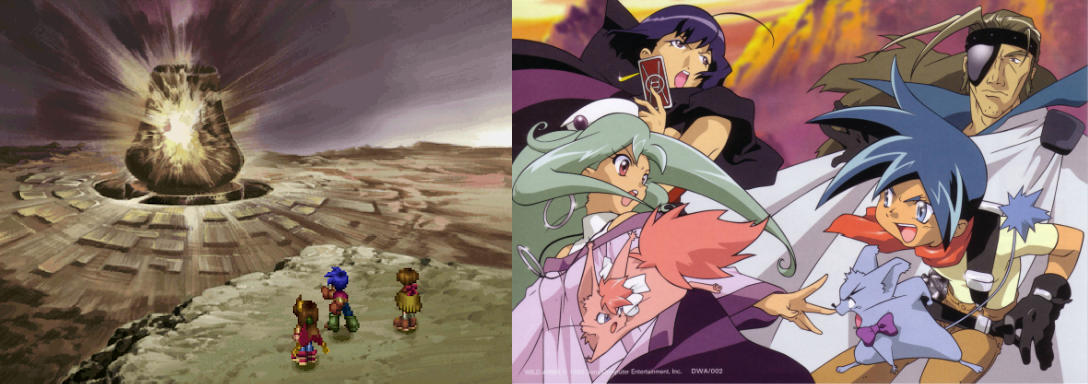
Wild Arms has always held a special place in my heart. I was first enthralled by the world of Filgaia with the first game’s PS1 release in 1997, where the series pioneer presented players with an unprecedented marriage of the medieval fantasy, Spaghetti Western, and sci-fi genres. As surreal as it sounded back then, the formula proved effective and expanded across four sequels, several spinoffs, and a remake. The series even got an anime titled Wild Arms: Twilight Venom. Despite feeling like a mashup of the first two games, Twilight Venom has its own plot hooks and stylistic flair.
First airing a month after the Japanese release of Wild Arms 2, Twilight Venom kept many of the franchise’s common tropes up to that point: a blue-haired protagonist, an experienced older man, a magic-wielding sorceress, an animal companion, and most importantly, the inclusion of ARMS, the titular superweapons. Depicted as high-powered, futuristic guns, ARMS have varying degrees of importance in the game plots but are one of the story’s driving forces in Twilight Venom. As was standard for the series back in the late ’90s, ARMS are wielded by the show’s token blue-haired kid, Sheyenne Rainstorm.
While the feel of the series is largely maintained through its shared themes with the games, Twilight Venom‘s deviations help the anime stand on its own. Right out of the gate, the situation with the protagonist is unique and jarring. Famous gunslinger Sheyenne Rainstorm wakes up in the body of a child, apparently having lost his original form. In his journey to find and reclaim his lost body, he allies with Dr. Kiel Arronax, a Popepi Pipepo (mouse-like creatures with incredible lifespans) named Isaac, and a trio of female thieves: Loretta, Mirabelle, and Jerusha (another Popepi Pipepo). The cast feels inspired by existing characters from the games, but the plot is fresh and unique, with a bittersweet but satisfying conclusion.
Unfortunately, Twilight Venom lacks series composer Michiko Naruke’s legendary touch. Naruke is known to have been inspired by Ennio Morricone, who is possibly best known for composing “The Ecstasy of Gold” in the classic film The Good, the Bad and the Ugly, and that reflection of greatness shows in her work. While a few remixes of Naruke’s songs are present in the soundtrack, the majority of the music is provided by anime and game composer Kow Otani. Though Twilight Venom‘s musical style doesn’t perfectly fit the feel Wild Arms is known for, Otani’s score mostly hits all the right notes.
While Twilight Venom never fully lives up to the epic legacy of its predecessors, it definitely captures their essence and feels like a canon part of the series. Featuring numerous easter eggs and references to the first two games, Wild Arms: Twilight Venom is an anime fans of the early series should definitely consider checking out.
by Kyle Seeley
Tales of Phantasia: The Animation

Tales of Phantasia (the very first game in the popular Tales of franchise) was originally released on the Super Famicom (SNES) back in 1995. The game pushed the system’s 16-bit boundaries and remained an important title to Namco over the years, with several ports and remakes. About ten years after ToP‘s original release, Namco decided to create a four-part animated miniseries that highlights important character interactions and major game events.
First and foremost: this anime is for fans of the game. Important story sequences are told out of order, some are even “incomplete” (that is, you’re dropped right into the middle of things), and scenes are somewhat randomly chosen and slightly reworked from the original games (nothing drastic; it’s mostly to help with pacing issues caused by the fractured format). But for fans, I think it’s worth the time to check out. The animation is incredibly clean and well drawn, the music is beautiful (with an opening that’s up to the series’ usual high standard), and it provides a beautiful look at ToP‘s world that even the remakes fall short on. Much like the SNES game, the anime feels quaint but overall enjoyable, and it may even give you that fuzzy old-school RPG feeling.
Funny enough, while we never saw the SNES version of the game overseas (just the poorly ported GBA version…which we don’t talk about), the anime’s English voice cast has a number of Tales-series veterans, including Johnny Yong Bosch as Cless, Stephanie Sheh as Archie, and Michelle Ruff as Martel, as well as Jamieson Price and Patrick Seitz (who have both voiced major heroes and villains in the Tales of series).
I honestly love the small details like Cless’s sword having an additional handlebar for prime-stabbing-strength, or Archie’s witch broom having an actual bicycle seat to keep her comfy while she flies around (which makes sense), and it’s great to hear Mint recall the original game’s most notable line, or listen to Edward D. Morrison wreck an enemy with a good old “INDIGNATION!!” The Tales of series is well known for its likeable characters interacting with each other (even lovingly bothering one another), so it’s nice to see Tales of Phantasia: The Animation bring more life to this beloved SNES classic.
by Stephanie Sybydlo
Persona 3 Movies
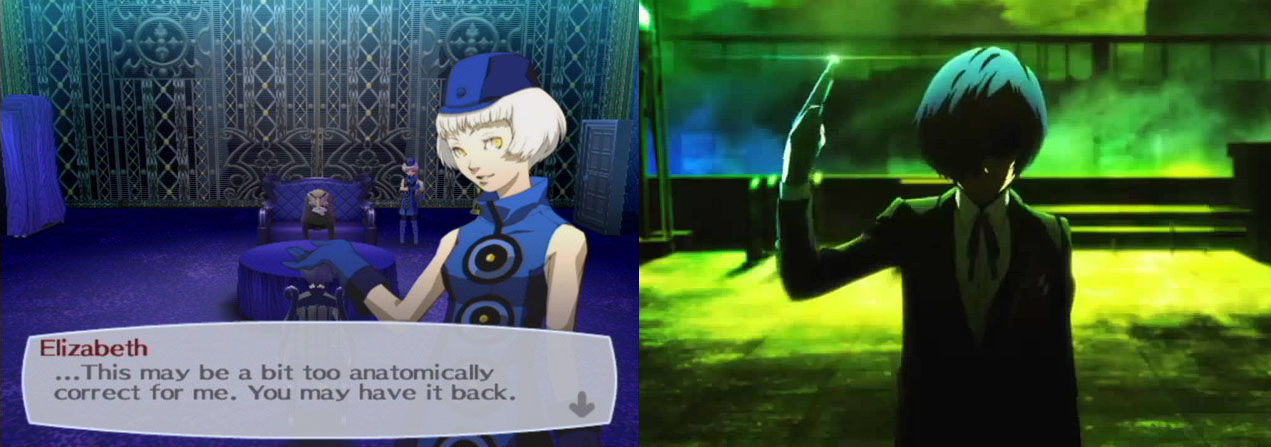
The four Persona 3 movies were released in a period between 2013 and 2016, seven years after the original release of Persona 3 on PlayStation 2 and partially concurrently with the (first) Persona 4 anime. Aside from the fact that Persona 3 is an amazing game that certainly deserves its own animation, I think the films were likely released this way to preserve the Persona 3 mythos and characters in the face of all of the crossovers, including Persona 4 Arena, Persona Q, and the Persona rhythm games. Overall, the movies are a solid rendition of the events of Persona 3, and I would even say that Persona 3‘s more “cinematic” story lends itself better to animation than Persona 4, which I always felt lost some of the mystery-unraveling aspects that are central to its plot when presented in anime form.
The Persona 3 movies mostly focus on the main plot of the game: the struggles of SEES to explore Tartarus and fight the Dark Hour with their personas. Since it’s Persona, though, there are at least a few nods to some of the social link side stories. The movies follow the game pretty closely, and while the main cast is perhaps not as fleshed out as in the game, due to lack of time, they have enough screen time to either remind longtime fans or give new fans an introduction. That said, there is time carved out for moments like the protagonist taking Elizabeth (the Velvet Room attendant in Persona 3) around town.
Visually, the movies do a great job conveying the dark, often greenish-blue color motif of Persona 3 (contrasted with the yellow and red of Persona 4 and 5, respectively). The fights between the characters’ personas and the shadows are rendered nicely as well, and they show off some of the awesome designs that are ever present in the Persona series. All that said, I am not sure the movies are good standalone anime titles for people who have no ties to the Persona series. To a certain extent, knowing Persona 3 (or at least being aware of it) helps in understanding these films, and aside from the fight scenes, they may come across as a bit boring to those with no interest in or knowledge of the series. Ultimately, I would recommend these movies to fans who are nostalgic for their SEES days or someone who’s played some of the spinoffs and doesn’t have the time for the full Persona 3 experience.
by Joe Czop
Star Ocean EX

There was always something about Star Ocean: The Second Story that drew me in, especially when it first came out and I was a dramatic teenager. Some combination of the town of Arlia and the peaceful forest and music hooked me. As I continued to play, some of the material left me speculating, and for me at least, it touches upon some of the big, substantive questions that good sci-fi loves to ask. The story centers around Claude Kenni, an interstellar traveller who is stranded on a developing planet after making a rash decision, and Rena Lanford, the vibrant village girl with questions about her past who finds him. She mistakes him for a fabled warrior, and from there they learn they both have a role to play investigating the Sorcery Globe that’s threatening her planet. You can play as either character, and the game boasts an interaction system among the adventurers you meet (and a lot of endings) that is quite impressive to this day.
Star Ocean EX is an anime attempt to capture this story; it consists of 26 episodes and covers content from the first half of the game, roughly to the end of disc 1. Released in 2001, it is based on a manga of the same material. Though it boasts some striking visuals similar to the main game, it takes a very conventional “Claude is the hero fighting to save the world” approach that is really at odds with the moments of storytelling interactivity and finesse present in the game. Even more confusing, the most high-stakes endgame content is relegated to a series of drama CDs and has never been relayed in anime or manga form. I can’t complain too much, though — I remember how difficult it could be to find anime in the early 2000s, as well as my shock and surprise at being able to obtain it at all. Now I have the luxury of critiquing it.
Rena’s story was always particularly intriguing to me. After spending so much time dwelling in myths and tales, what happens if you find someone seemingly stepping out from a legend, and they’re not what you expect? It really is a shame that side of the story is never explored in Star Ocean EX. Instead, Rena immediately functions as Claude’s love interest without real cause, and she is generally infantilized compared to her portrayal in the game. Really, Star Ocean EX is Star Ocean 2 through a lens that makes it appear more like some of the later games in the series. Still, if you’re interested in everything Star Ocean, there are certainly worse anime adaptations of games out there, and worse anime in general.
by Hilary Andreff
Castlevania

Castlevania is an odd item to consider for this list; after all, half of the games in the franchise do not quite fit the criteria of action RPG. The other consequential point to consider is that while the Castlevania animation does have a Japanese anime style and some veteran Japanese animation staff on the production team, the project is a global endeavor with plenty of help from Western organizations, from British lead writer Warren Ellis to the Texas-based Powerhouse Animation Studios. This animated project was a surprise success for Netflix; initially a four-episode run, the series saw confirmation of a second season hours after its launch, with eight episodes landing in late 2018. A third season, planned to be ten episodes, is scheduled to reach Netflix users in March 2020.
What makes this out-of-left-field animated production so compelling? Visually, it is a sight to behold. But ultimately, the story and character portrayals win the day. Based loosely on the events of Castlevania III (NES) and its sequel game Castlevania: Curse of Darkness (PS2), the story opens with Dracula himself falling in love with a human woman and attempting to change his ways in order to allow vampires to co-exist with human society. Unfortunately, as anyone who has played Symphony of the Night knows, humans do not take kindly to the humanitarian efforts of Dracula’s wife, and after that? Time for some vengeance.
The main protagonists throughout the show, so far, are Trevor Belmont, Sypha Belnades, and Alucard. The three form their alliance by the end of the first season and take great strides fighting against Dracula’s loosely allied band of fellow vampires and other sympathizers — including devil forgemaster Hector and his rival Isaac, both from Curse of Darkness. As the second season draws to a close, it appears that Belmont and crew will be facing off against a head vampire even more cunning than Dracula himself: Carmilla. There is no one canonized form, personality, or allegiance that Carmilla takes across her many appearances throughout the Castlevania franchise. As such, the writers had great artistic liberty in developing the new antagonist.
If you’re up for witty dialogue, plot-driven action, and a fair bit of explicit blood and gore, Netflix’s Castlevania “anime” series is the show for you. If you’re driven by the lore of Castlevania and the mythos of vampires in general, all the more reason to join in. Wallachia AD 1475 is the place and time to be!
by Patrick Gann
Final Fantasy: Legend of the Crystals
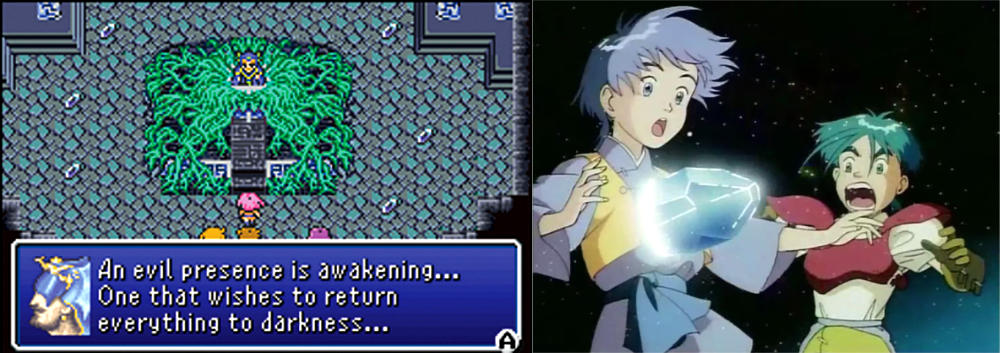
Of all the Final Fantasy games you could conceive of — or even really want — as an anime OVA, I doubt Final Fantasy V would rank that high for most people. But it happened! Sort of.
While the original SNES game was praised for its gameplay, the story was a lot more pedestrian. It focuses on a connected group of heroes who save the world from a giant evil tree named ExDeath. (Okay, I realize saying there’s a “giant evil tree named ExDeath” sounds super cool, but trust me, the story is not one of FFV‘s stronger assets.) There’s a few fun twists, like two party members being estranged siblings or one of them originating from another planet, but overall, FFV had a tame story where you saved the world using the power of Crystals (your usual FF affair).
But Final Fantasy: Legend of the Crystals is just sort of weird. Set 200 years after the game, the original cast is now but a legend, chocobos are inexplicably featherless, and pirates have ditched dumb wooden ships to fly in the sky wearing black latex outfits in a tacky pink airship. The plot doesn’t really do anything new or interesting compared to the game; an almost literal example of these lateral stakes is how the big bad goes from ExDeath to — wait for it — RaDevil and is bent on becoming a god because of course he is.
It’s not all bad. The animation and scenery are stunning, the action is a lot of fun, and the idea of a “future arc” is admittedly compelling; but much like 2001’s misfired attempt at a full-motion Final Fantasy film with The Spirits Within (heck, let’s lump in FF: Unlimited while we’re at it), Legend of the Crystals feels weirdly off-brand for what it’s representing. Instead of “Final Fantasy“, it feels more like a bizarre fusion of the 1988 cyberpunk epic Akira and Studio Ghibli’s Castle in the Sky, featuring everything from powerful magics, giant machines, eldritch monstrosities, and a destroyed “future city” on the moon. (Okay, I realize saying these things also sounds cool, but trust me, this 100-minute OVA doesn’t try to explain any of it, nor does it effectively add to the original game.)
There are a few sparkling moments where it really feels like Final Fantasy, like when Nanaly uses a cool chocobo summon or any time Prettz takes out his Sephiroth-sized samurai sword to slice through enemies; but in the end, it’s neither the best (nor the worst!) way to spend some time with the Final Fantasy series.
Oh well, if nothing else, you get a chance to see the original FFV cast where Galuf is twice the mass of any other party member; you can also have a good laugh when a beam of light shoots out of the lead heroine’s butt (a scene I could never make up).
* Also, a fair warning to photosensitive viewers: there are a lot of flashing light effects in this OVA.

